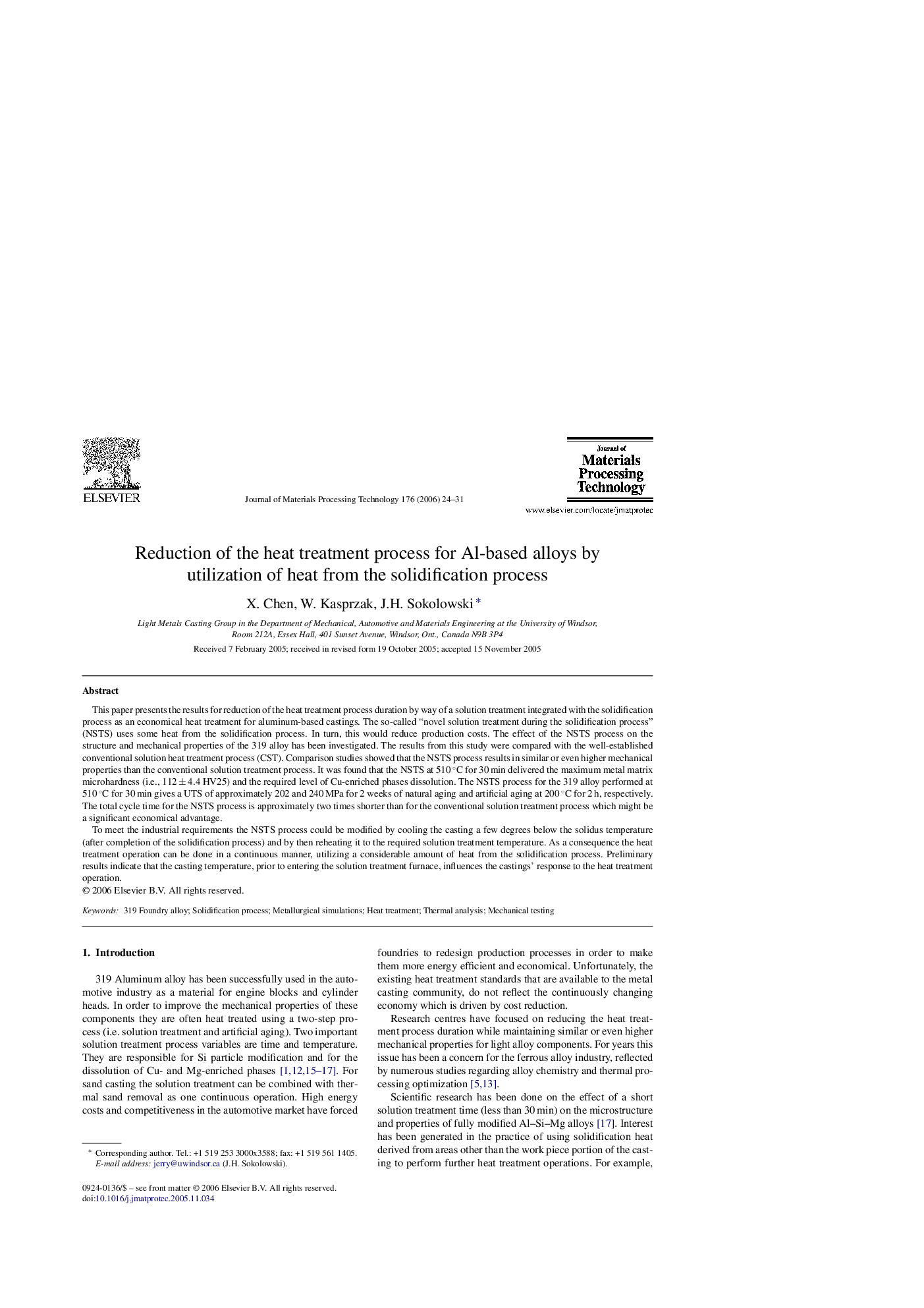| Article ID | Journal | Published Year | Pages | File Type |
|---|---|---|---|---|
| 796509 | Journal of Materials Processing Technology | 2006 | 8 Pages |
This paper presents the results for reduction of the heat treatment process duration by way of a solution treatment integrated with the solidification process as an economical heat treatment for aluminum-based castings. The so-called “novel solution treatment during the solidification process” (NSTS) uses some heat from the solidification process. In turn, this would reduce production costs. The effect of the NSTS process on the structure and mechanical properties of the 319 alloy has been investigated. The results from this study were compared with the well-established conventional solution heat treatment process (CST). Comparison studies showed that the NSTS process results in similar or even higher mechanical properties than the conventional solution treatment process. It was found that the NSTS at 510 °C for 30 min delivered the maximum metal matrix microhardness (i.e., 112 ± 4.4 HV25) and the required level of Cu-enriched phases dissolution. The NSTS process for the 319 alloy performed at 510 °C for 30 min gives a UTS of approximately 202 and 240 MPa for 2 weeks of natural aging and artificial aging at 200 °C for 2 h, respectively. The total cycle time for the NSTS process is approximately two times shorter than for the conventional solution treatment process which might be a significant economical advantage.To meet the industrial requirements the NSTS process could be modified by cooling the casting a few degrees below the solidus temperature (after completion of the solidification process) and by then reheating it to the required solution treatment temperature. As a consequence the heat treatment operation can be done in a continuous manner, utilizing a considerable amount of heat from the solidification process. Preliminary results indicate that the casting temperature, prior to entering the solution treatment furnace, influences the castings’ response to the heat treatment operation.
